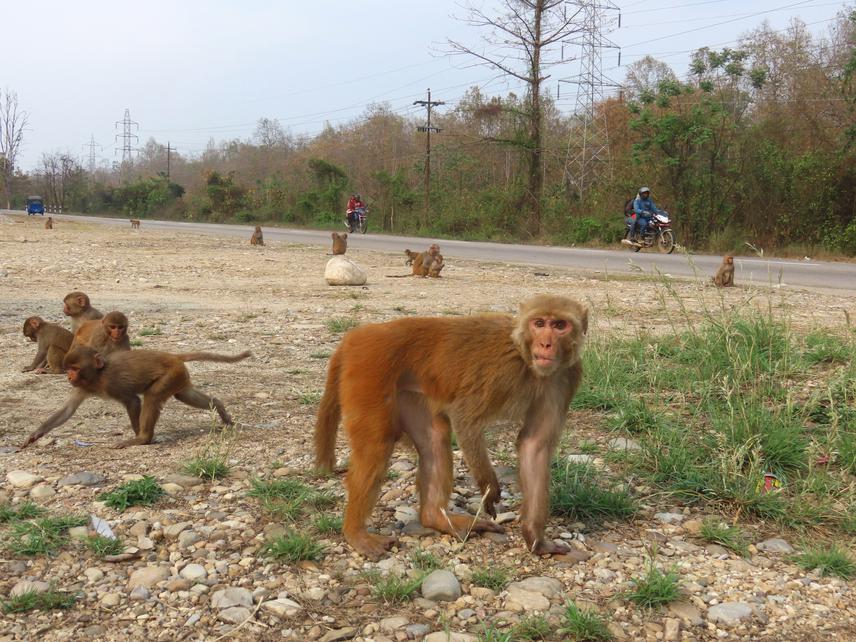Jayaram Neupane
Wildlife mortality in road accidents due to collisions with vehicles has been a critical problem in Nepal. The East-West Highway, which is Nepal's longest highway, passes around 200 km through low-lying protected areas, including Parsa National Park (26 km). It has been reported that road accidents, particularly those on the East-West Highway, are responsible for around 40% of all wildlife deaths in Nepal. The rapid development of linear infrastructure in recent years has not adequately taken into consideration variables like wildlife habitat and migration routes, or crossings or any other element of the ecosystem.

Roads are the foundation for development, but they must also be wildlife-friendly in order to save the lives of the animals. © Jayaram Neupane.
Given the large magnitude of wildlife mortality in road accidents, it is essential to assess factors affecting such road kills and map their spatial patterns to predict locations of high road kill risk, and inform mitigation measures. Thus, this proposed project is designed to collect data on factors of spatial and temporal pattern of wildlife roadkill to predict major hotspots of road kill and inform mitigation measures, and conduct outreach campaigns targeting vehicle drivers to reduce the occurrences of road kills.
This project will generate information on spatial and temporal patterns of wildlife road kill. The identification of road kill factors will allow us to understand the main factors causing the likelihood of increased road kill and target such factors to devise mitigation measures. The information obtained will help us to predict the hotspots of road kills and target specific road segments for increased implementation of mitigation measures. Similarly, the project will conduct outreach campaigns targeting vehicle drivers to limit vehicle speed to reduce wildlife road kill. We will specifically conduct road side awareness programs, develop and publish outreach materials to improve awareness about the ways of mitigating road kills. The project will also build the capacity of the park staff to standardize road kill monitoring.
Overall, this project will contribute in effective roadkill mitigation measures implementation, conduct outreach campaigns, and develop the standard monitoring protocol .